|
|
|
|
|
|
|
|

|
Digitising Patterns of Power
Newsletter No.3 / September 2017
|
Dear Ladies and Gentlemen,
Dear Colleagues,
After the summer break we are pleased to send you manifold news on our Clusterproject "Digitising Patterns
of Power (DPP)" at the Institute for Medieval Research (IMAFO) of the Austrian Academy of Sciences. Although
this Newsletter’s length is quite remarkable, we do hope that you will find the leisure and interest
to read our contributions, which present recent developments within our project, namely scholarly activities,
research cooperations and new scholarly projects, on which our Academy
has reported recently.
We wish you a fruitful beginning of the academic year!
Yours sincerely,
the DPP team
|
|
|
|
|
|
|
|
DPP at the IMC Leeds 2017
|

|
The International Medieval Congress (IMC) 2017 at the University of Leeds took place from 3-8 July.
It is the largest congress of its kind in Europe. This year it has attracted around 2,444 historians
from 56 countries presenting over 1,939 individual papers. The DPP team took part with two consecutive
sessions entitled "Digitising Patterns of Power, I: Genealogy on a Map" and "Digitising Patterns of Power,
II: Borders, Power and the Other" on Monday, 3 July, with altogether eight papers. Our sessions offered
a rich variety of historical research, visualisation and technical development.
|
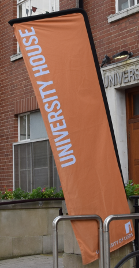
|
|
|
All papers were well attended by scholars with different academic backgrounds. Therefore, both sessions
had very constructive and interesting discussions, which revealed a remarkable interest for our scholarly
work and for our DPP OpenAtlas Database. With this great start at the IMC 2017 we were able to enjoy the
rest of the large academic program of the congress and had the chance to get in touch with several
scholars and students from all over the world. Nevertheless, we also had the time to relish the royal
armoury, which is the largest museum of medieval weaponry in Great Britain, and the manifold social
activities at the IMC. So, we are looking forward to the IMC in 2018 and we do hope to see you there!
|
|
|
|
|
|
|
|
DPP begins a New Scholarly Cooperation
|
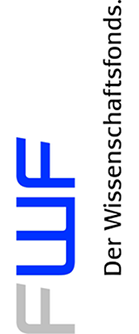
|
It is with great pleasure that we may announce a new scholarly cooperation between DPP and a recently approved FWF Austrian Science Fund Project P 30384-G28 "Byzantino-Serbian Border Zones in Transition: Migration and Elite Change in pre-Ottoman Macedonia (1282–1355)", which is conducted by Mihailo Popović (as Project Leader), is hosted at the Division of Byzantine Research of the Institute for Medieval Research of the Austrian Academy of Sciences and is at the same time a subproject of the Long-Term-Project Tabula Imperii Byzantini (TIB). Two scholars, namely Dr. Vratislav Zervan and Bernhard Koschicek, BSc, will be engaged in this project, which will last for four years (1 October 2017-30 September 2021).
|

|
|
The European continent as a whole and the European Union in particular are facing a period of increasing dynamics of internal migration as well as external immigration at the moment. Migration in all of its various aspects has always been a part of the history of the European continent. In medieval societies the question of migration is closely connected with the definition as well as the representation of medieval borders.
The respective FWF Austrian Science Fund stand-alone project focuses on the borders of the Byzantine (Eastern Roman) Empire in medieval South-East Europe, namely in pre-Ottoman (i.e. Byzantine) Macedonia. Although substantial publications exist on the population of as well as on the migration in Byzantine Macedonia, there is still an urgent need for research based on written sources and toponyms. Two interrelated research questions will be addressed in two distinct work packages: "Rivalling Political Concepts – Byzantium and the Medieval Serbian Oecumene" and "Cross-Border Societies and Elite Change in Byzantine Macedonia".
|
|
|

|
|
Special attention will be given to the analysis of formulations with regard to the Serbian expansion in the area of research, the acquisition of new territories and their administrative incorporation on the macro-level and to the localisation of conquered settlements with related settlement typologies as well as on the change of local elites on a micro-level. Moreover, tools from Digital Humanities in mapping and visualisation will be applied in order to communicate the achieved results to the interested public.
|
|
|
|
|
|
|
|
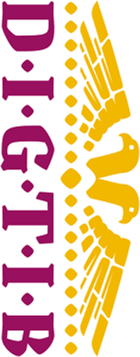
|
Technical Cooperation
between DPP and DIGTIB
|
We are very pleased to announce a technical cooperation between DPP and the
Long-Term-Project Tabula Imperii Byzantini (TIB) of the Austrian Academy of Sciences.
The TIB carries out systematic research in the historical geography of the Byzantine Empire, from the
beginning of the 4th century to the mid-15th century. The aim of the project is to create a historical
atlas of the Byzantine space from Late Antiquity to the Early Modern period.
The initiatives in the field of Digital Humanities at the Austrian Academy of Sciences and also the
related developments in Byzantine Studies in the last couple of years have encouraged the TIB to step
up its efforts to provide a platform for the adequate presentation and sustainable usage of data, which
was and is published in respective TIB volumes. The aim of the
Digital Tabula Imperii Byzantini (DIGTIB)
is to create an online, searchable alphabetical gazetteer
based on all published TIB volumes (starting with TIB 1) by extracting the indices of places and by
listing the specific pages of documented toponyms within the respective volumes. DPP will support these
endeavours based on its own expertise in Digital Humanities. The respective methodology, workflows and timeplans have been developed
and implemented by Andreas Külzer, Mihailo Popović, Bernhard Koschicek and Veronika Polloczek.
|
|
|
|
|
|
|
|
Joint Scholarly Work in Skopje
|
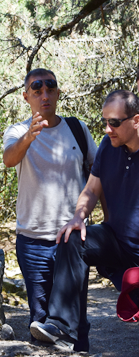
|
In the summer of 2017 another work package has been successfully accomplished within the framework
of the joint scholarly project entitled "The Ethnonym of the Vlachs in the Written Sources and the Toponymy in the Historical Region of Macedonia". From 17 July until 31 July 2017 Mihailo Popović as the Austrian project leader and Jelena Nikić, BA as scholarly co-worker travelled to Skopje in order to conduct research in the State Archive of the Republic of Macedonia and in the library of the Macedonian Academy of Sciences and Arts concerning the interplay between the resident population and the nomads (i.e. the Vlachs) in the historical region of Macedonia from the 11th to the 16th century. The research in situ as well as the consultations with Prof. Dr. Toni Filiposki and Prof. Dr. Boban Petrovski (both "Ss. Cyril and Methodius" University, Department of History, Skopje) were very fruit- and helpful. Moreover, joint field research was conducted in the canyon of Matka to the south-west of Skopje. The joint project is developing smoothly and will yield new results to the DPP OpenAtlas Database.
|
|
|
|
|
|
|
|
|
|
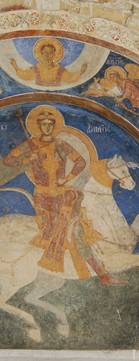
|
Our second visiting scholar will be
Dr. Srdjan Pirivatrić (Serbian Academy of Sciences
and Arts, The Institute for Byzantine Studies, Belgrade), who will join us in the month of November 2017.
His scholarly expertise includes inter alia Byzantine, Serbian and Bulgarian History, Classics,
Byzantine Historiography and Rhetoric and Mount Athos Studies. He is invited by the
Tabula Imperii Byzantini (TIB), namely
the FWF Austrian Science Fund Project P 30384-G28 "Byzantino-Serbian Border Zones in Transition (1282-1355)"
(see above), as well as DPP and will cooperate with Mihailo Popović, Vratislav Zervan,
Bernhard Koschicek and David Schmid on the research of Byzantine Macedonia in the 13th/14th Centuries.
Moreover, Dr. Pirivatrić will give a paper within the DPP Lecture Series at the end of November 2017, which will be announced in due course.
|
|
|
|
|
|
|
|

|
News on
Software Engineering and GIScience
|
|
In 2017 the work on OpenAtlas focused on migrating the application to Python 3 within the Flask framework.
We estimate that the port with additional features will be finished and available by the end of 2017.
It will include the possibility to upload various files like images, texts, videos etc. and display
them directly in the application. Also the user-interface will be extended to record archaeological
data on sites, features, stratigraphical units and finds. Furthermore, this port results in considerable
performance improvements. The prototype of the map-based online application (DPP Mapviewer) was successfully tested in
early 2017 within our project team. Building on this prototype, development continued and polygon
representation of uncertain locations and permalinks were added. In the remaining months of 2017
development focuses on an easy to use query builder. This query builder will allow the user
to explore the data stored within the DPP OpenAtlas Database and show the results on the map.
The API connecting the application to the database were updated to facilitate this query builder
for the application. Base maps for the zoom levels 12 and 13 are also in preparation.
|
|
|
|
|
|
|
|
|
|